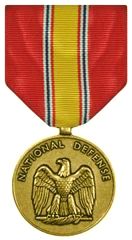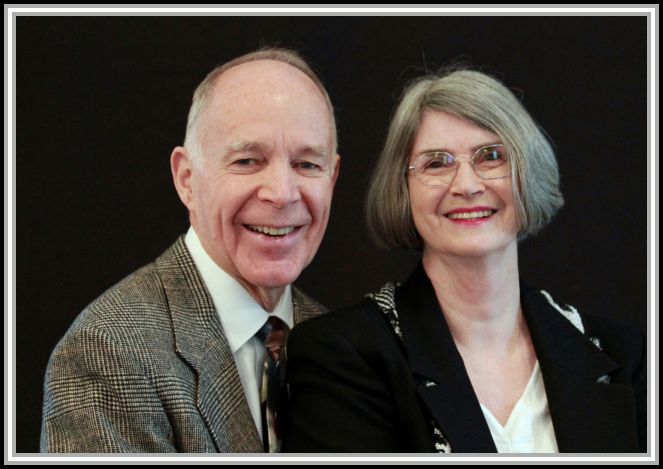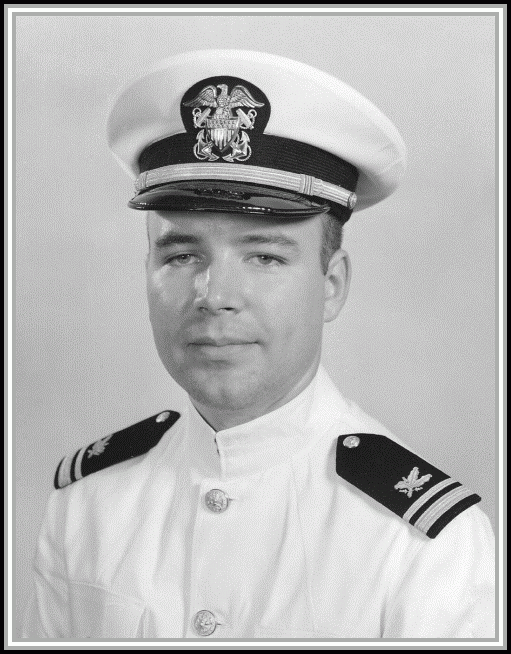Edward P. Stone, LTJG, SC, USN
SECTION 7.
photograph contributed by Edward P. Stone
| |||
| |||
| |||
| |||
| |||
| |||
| |||
|
For Those in Peril on the Seas
copyright 2010 Edward P. Stone
used with permission
It was my first, and only, tour of sea duty. I was fortunate to have been assigned as Supply Officer of the USS SAVAGE (DER-386), home ported at Pearl Harbor, Hawaii. Our mission was to patrol the Distant Early Warning (DEW) line, searching with state-of-the-art electronic equipment for “enemy” ships, planes, and submarines. The SAVAGE first served as a Coast Guard destroyer escort (DE-386) in World War II. She had been converted for radar picket duty in 1956. The date was February, 1963, 2 years after the Bay of Pigs and 4 months after the Cuban Missile Crisis, significant events of the Cold War. Our faceless enemy occasionally appeared, but only as a small green dot on a radar or Sonar screen. Most Sonar contacts turned out to be whales, which would tag along with us for awhile, and then accelerate out of range with a speed no submarine or surface ship could equal. All in all, it was a pleasant, safe, and mostly uneventful assignment in the peace-time navy.
I had worked hard to prepare for this cruise: critical spare parts were on board; provisions store rooms were packed with enough food to feed the crew of 150 men and 12 officers for 3 ½ weeks; $45,000 was in my safe for the bi-monthly paydays; and 28 reels of movies were on hand for our nightly entertainment. (There was no radio or TV reception at sea. We received our news by teletype in the radio shack, located just above the bridge. Classified documents were sent and received in code, and I was the ship’s cryptographer. As such, my battle station was the crypto room, adjacent to the radio shack. More on that later.)
As we set sail on that blustery Monday morning, the blowing palm trees gave us a farewell wave. Soon we lost sight of Diamond Head, and headed to our duty station, a 50 mile circle in the north Pacific, just south of the Aleutian Islands. The gray sky occasionally turned rainy, but the seas remained fairly calm. Dinner had been unusually good that night: stir-fried shrimp pasta, with chocolate ice cream for dessert. After his second serving of ice cream, the Captain retired to his cabin. A few of us remained in the wardroom as the stewards began setting up for the evening movie, Rio Bravo, a western starring John Wayne.
So far, it was a typical first day out, with everyone settling into their at-sea routines, and counting the days until the next payday or until our return to dry land. Our tranquility was about to be broken, as a welder’s torch cut through his gas line, and turned the acetylene cylinder into a powerful flame thrower. In seconds all Hell broke loose! First the damage control team was summoned “on the double” to the engine room. Then the General Quarters alarm sounded, and the Captain ordered all hands to man their battle stations. As I went topside and climbed up to the crypto room, I could see the frantic activity that was taking place, as crews of men were unreeling and hooking up hundreds of feet of fire hose, and racing toward the engine room, which was now spewing black smoke into the equally black night. Suddenly, the loud drone of our giant main engines stopped, and the only sounds we heard were commands to the fire fighters, gushing of water from the fire hoses, and choking and gasping sounds coming from those still below in the engine room. We were now dead in the water, without ship’s power, using emergency generators to fight an out-of-control fire in the engine room.
As I arrived in the radio shack I heard a radioman sending SOS calls to any ships in the vicinity; but there were no answers. We were alone, stranded, and on fire! My job in severe emergencies was to destroy the encryption disks, to prevent them from falling into enemy hands. As I prepared to do this, I heard the most chilling intercom announcement of my life: “Stand by for heavy explosions amidships!” – which was right below where I was sitting! My thoughts immediately turned to my young wife and infant son in Hawaii, and to my mother in Indiana – wondering if I would ever see them again. Fortunately, the heroic efforts of many brave men succeeded in extinguishing the fire, and repairing some of the damage, so that three days later the ship was able to limp slowly back to port under her own power. And I was delighted to see my wife and son, all smiles, waiting on the dock to welcome me home. That April, after two months of shipyard repairs on Ford Island, the USS SAVAGE resumed her routine picket duty.
Edward P. Stone (LTJG, SC, USN)
Magnolia Springs, AL
August 12, 2010
[Special thanks to Ed Stone for his most gracious contributions to this site.]
Ed and Ginny Stone in 2011
Lieutenant (jg) Edward P. Stone, 1962 - Supply Officer for the USS Savage May 1961 -April 1963
National Defense Medal
Vietnam Service Medal
w/3 bronze stars
SECTION 7. CONTENTS



